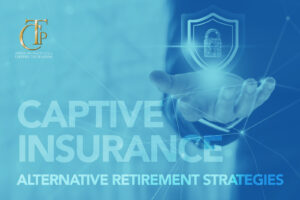By Marlon Stepp, Director, Energy Incentives, LEED GA, CEM of Tri Merit
Despite all the gloom and doom predictions for commercial real estate, two-thirds of the world’s total building area today will still exist in 2040. Buildings generate nearly 40% of annual global CO2 emissions. Without widespread building decarbonization across the globe, these buildings will still be increasing CO2 emissions in 2040, and we will not achieve the Paris Agreement’s 1.5°C target for reducing global temperature.
If you have clients who are building owners, real estate developers, designers, architects, engineers or general contractors, I urge you to get up to speed on the Energy Policy Act (EPAct) §179D tax deduction. This provision — first introduced in 2006 — was made permanent in late 2020 under the Consolidated Appropriations Act. It provides an immediate tax deduction for lighting, HVAC, and building envelope installations completed in commercial buildings since Jan. 1, 2006.
In 2023, The Inflation Reduction Act nearly tripled the amount that building owners can deduct for constructing or improving energy-efficient commercial and industrial buildings, as well as some residential buildings above four stories.
That deduction is now up to $5.00 per square foot (up from $1.80 per square foot). Even better, the incentive is available not only for new construction projects but for upgrades and retrofits of existing buildings.
Other changes include new allocations available for non-profits and Indian tribes and immediate deductibility for real estate investment trusts.
How the credits work
The §179D energy efficient tax deduction is typically taken by building owners but, in many instances, it can be allocated to the designers, architects, engineers, and contractors of public buildings. Along with the new updates, prevailing wages and apprenticeship requirements must be met in order to achieve the bonus deduction for the high square footage amount. This incentivizes owners and designers to work with contractors at a fair wage rate, similar to the Davis Bacon Act.
The §179D deduction is now based on a sliding scale with $2.50/sqft being the minimum deduction with a 25% efficiency increase scaling to $5.00/sqft for a 50% efficiency increase (assuming prevailing wage requirements are met).
Tax-exempt entities can now allocate deductions to designers and architects of energy-efficient buildings. The deduction can be reset every three years for commercial buildings and every four years for government buildings. This is done to allow for a more gradual increase in energy efficiency.
Who is eligible?
New commercial construction projects and upgrades and retrofits to older U.S. buildings can qualify for the tax deduction. However, the building should fit the scope of ASHRAE Standard 90.1-2007, meaning that it is:
-
- Used for commercial or industrial purposes.
-
- A dormitory.
-
- Converted to a commercial building.
-
- A public-owned building such as a school, courthouse, or even a recreational building.
Who is not eligible?
Here are examples of buildings that do not qualify:
-
- Single-family residential.
-
- Multi-family residentials with three or fewer stories.
-
- Manufactured houses.
-
- Buildings that do not use electricity or fossil fuels.
§179D allows designers to continue to build energy-efficient buildings without having to focus as much on the cost. They can design with the highest possible standards and efficiencies in mind. This makes it possible to receive tax deductions before projects are even finished.
As a result, we can estimate the potential tax benefits of a building while it is still in the design phase. The resulting benefit of the deduction can then be used for other projects, or for even more energy-efficient features that help reduce emissions and increase tenant comfort.
Real world examples
We recently worked with a small mom-and-pop furniture manufacturing company that had just expanded from a 50,000 square foot warehouse to a new 205,000 square foot building. The owners were feeling stressed due to the overwhelming commitment and responsibility that comes with such an expansion.
We were able to help the owners obtain a full $1.80 per square foot credit for their new construction — the largest available at the time. This $370,000 deduction amount helped them conserve cash and provided a financial cushion to help them continue growing.
Thanks to the deduction, the company was able to reinvest the savings into production maintenance, more energy efficient features and even into future buildings. This mom-and-pop manufacturing company even described the §179D process as very smooth. It was completed in the following tax year with enough time to file before deadlines.
Building codes and standards are being updated to help us achieve lower emissions. Some of the major solutions consist of using energy efficient design strategies in which we can help builders and contractors calculate the emissions produced from the building — prior to construction or renovation — to ensure that they are in compliance and doing their part.
Bioclimatic architecture is now one of the more frequently used components in energy efficient design strategy. It refers to the shape and orientation of the building, to solar protection and to passive solar systems, which play a huge role in reducing the level of emissions and providing comfort for tenants. The high-performing building envelope can be further improved through appropriate insulation, glazing and air-sealed construction with avoidance of thermal bridges.
LEED, ENERGY STAR, Green Globes and WELL are examples of programs that incentivize and guide architects, designers, engineers and building owners to ensure that current energy efficiency standards are met. These programs help promote and guide buildings though each stage of life.
The future of energy efficiency
Depending on your state or municipality, programs can take the form of rebates, grants, or even tax incentives. While specifics vary from program to program, savings categories frequently include financial incentives for HVAC systems, water heaters, building insulation, appliances, weatherization, lighting, and other energy efficient improvements. At the start of each project, we recommended that you visit the Department of Energy (DOE) website to search its database of energy efficiency tax credits, rebates and savings available at the local and state level.
Taking advantage of Section 179D helps clients do good for the environment while doing good for themselves. What’s not to like? Just know that qualifying for valuable energy efficiency credits can be complicated and shouldn’t be attempted without having an experienced and knowledgeable guide by your side.





